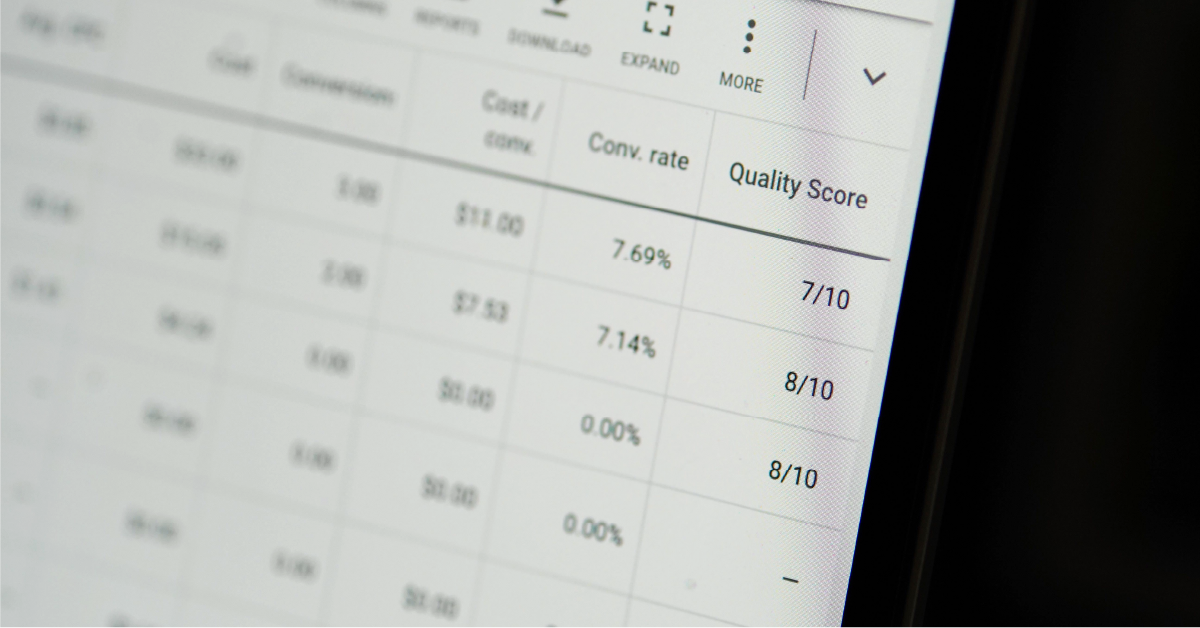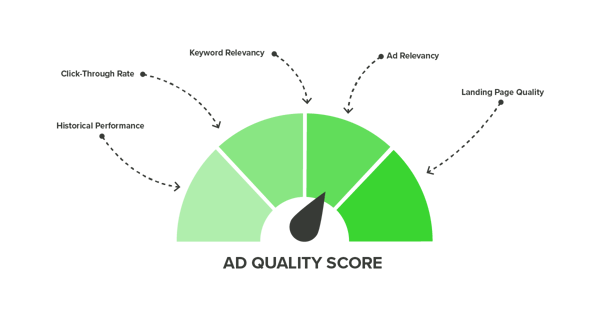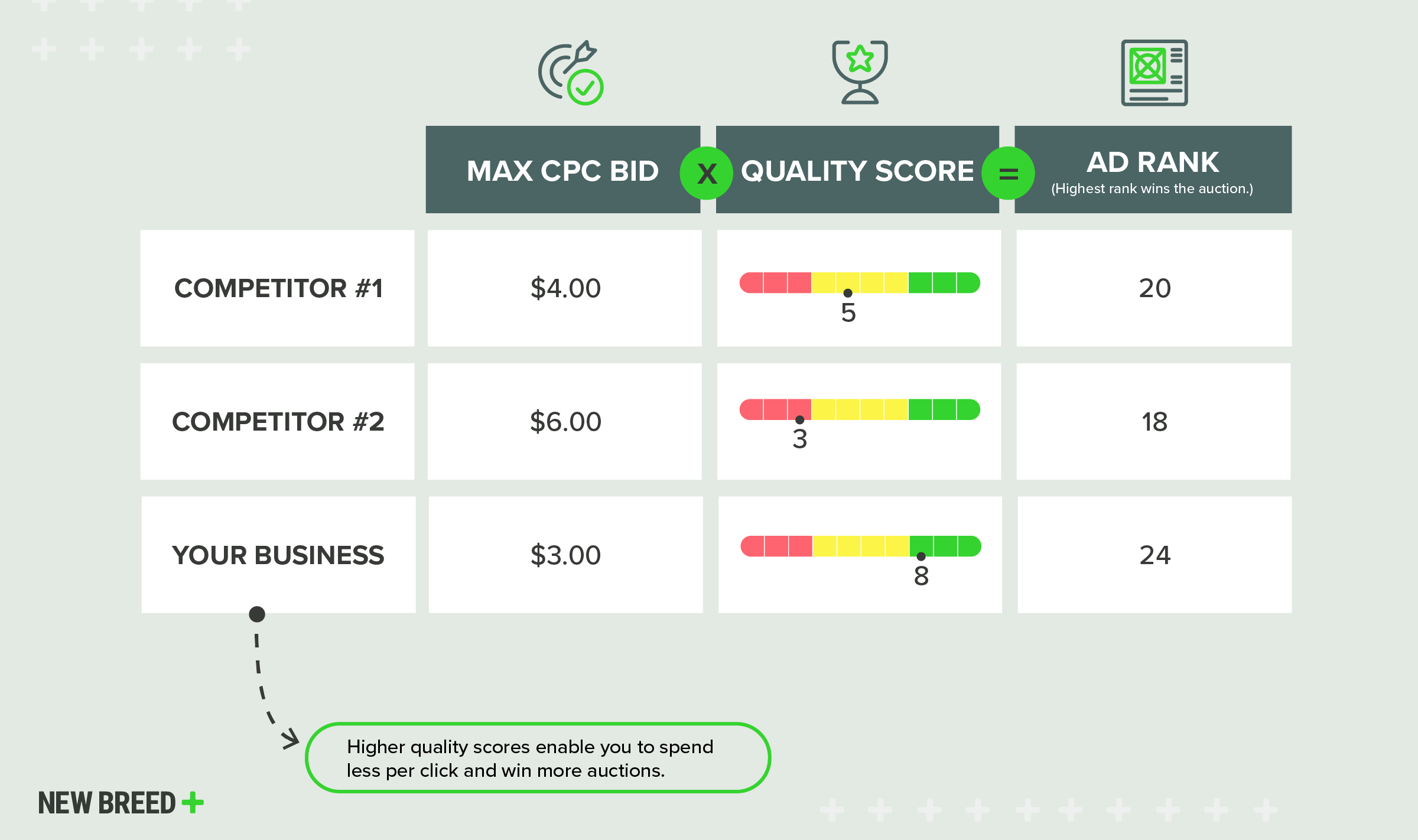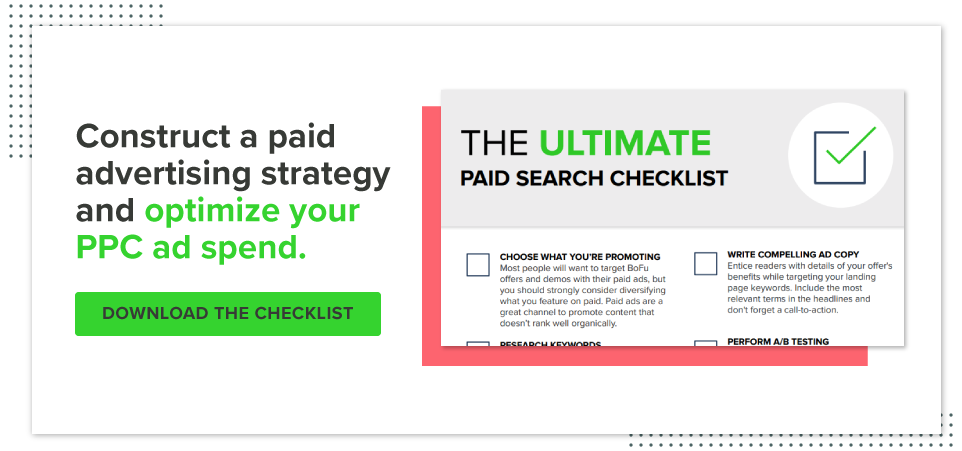Stop Wasting Money: How to Increase Quality Score in Google Ads

If you’ve never paid (pun intended) much attention to your quality score, chances are you’re wasting a lot of money.
The good news is that this highlights a clear opportunity to maximize your spending and deliver a greater business impact through your paid search strategy. If you’re wondering how quality score and overpaying for clicks are connected, I promise if you read the rest of this post, I’ll tell you (and I’ll stop trying to guess the questions you’re asking in your head.)
What is Quality Score?
Quality score is a number between 1 and 10 that illustrates Google’s determination of whether the ads you’re running will be what the searcher is looking for. If Google thinks your ad is exactly what the searcher is looking for, your quality score will be higher, and if your ads seem misaligned, your quality score will be lower.

However, quality score is not to be confused with ad rank. They measure some of the same things, but the difference is that you can see and use your quality score as a tool to learn how you can improve your ads, and ad rank is Google’s way to determine where your ads fall on the search engine results page — or if they’ll show at all. Think of ad rank like Google’s organic search algorithm and quality score as your domain authority score. By working to maximize quality score, you can lower max cost-per-click bids and still continue to place first in the ad auction.
How is Quality Score Calculated?
There are three aspects that play a part in determining the quality score for every keyword you’re targeting: ad relevance, expected click-through rate (CTR) and landing page experience.
Ad relevance is measured based on how closely related your ad copy is to your keyword. This is one of the biggest reasons you want to have ad groups with very closely related keywords — that way, your ads are highly relevant to all the keywords in that ad group. For example, if you run a sporting goods store, you wouldn’t want to have one ad group with keywords for both baseball and soccer equipment, since the ads couldn’t match both categories of keyword without getting confusing for the searcher. If you were looking for baseball equipment, would you click on an ad that advertises soccer equipment? Probably not.
That leads right into the next aspect of quality score: expected CTR. This refers to how likely Google thinks it is for someone to click your ad and go to your landing page, which is directly related to how enticing the offer you’re promoting is. To determine this, Google looks at past performance for that keyword and how it performed in relation to your ad’s position. If someone searches for baseball equipment and gets an ad related to soccer equipment, the expected CTR will not be favorable. It's the difference between using ad copy that says "purchase soccer equipment here" vs. "Click here to become the next soccer sensation. find top of the line soccer equipment used by world cup winners and club legends. Purchase today!" The second one gives more information in a more convincing way and provides a call-to-action that describes exactly what you want the viewer to do.
Then, last but not least, we have landing page experience. Here, Google is looking for your landing page not only to be functional and useful, but also to be relevant. Google wants to see that the content on the page aligns with the keyword that the user searched. So if a user searched for baseball equipment, the landing page should have plenty of relevant information about baseball equipment.
If you’re seeing a theme of relevancy, you’re on the right track. Google’s overall goal is to ensure that people find the things they’re looking for on their search engine, which includes paid search ads.
Why Should I Care About Quality Score?
Remember at the start of the post when I asked if you were wondering how quality score and wasting money were related? Well, it turns out that the quality score for each keyword in your account has a direct impact on how much you’ll pay for a click on your ad when someone searches for that keyword.

If you think about it in a simple way, it makes sense. Google wants high-quality ads, so they make it in advertisers’ financial interest to invest the time into creating a smooth experience, essentially incentivizing high quality with a lower cost and de-incentivizing low quality with a higher CPC.
In fact, if your quality score is 1, your CPC can be over 400% higher than someone with a quality score of 10. For example, let's say you and your direct competitor are bidding on the same keyword, but your quality score is 1 and theirs is 10. you might spend $100 for 10 clicks on that keyword while your competitor might only need to spend $20 for the same amount of clicks.
How Can I Increase My Quality Score?
Unfortunately there’s not a quick fix for quality score, but the effort is worth it. That said, the best way to avoid poor quality scores is to start with a solid foundation. Here are a few tips for setting up your campaign for a higher quality score from the start.
- Plan your campaigns and ad groups beforehand to ensure that all keywords are highly relevant to each other, and each ad group is small — 5 to 10 keywords is ideal. For example if you’re selling baseball equipment, you’d want to have two separate ad groups for baseball bats and baseball mitts.
- Make sure your ads contain your target keywords and are contextually relevant to all the keywords you’re targeting. If you can use exact match keywords and continue to win auctions, it shows Google how relevant your keywords are, which helps quality score, and the cycle continues.
- Make sure your landing page is functional, useful and relevant. If you need to, create a new landing page to ensure all those requirements are met. By educating the user on the core topic they were searching about, you can enhance quality score and conversion rate with one initiative. Once you have a landing page, duplicate it for every ad group so that you can tailor it to each one specifically. Your ads for baseball mitts should go to a landing page about baseball mitts instead of a generic landing page about baseball equipment.
If your campaign is already running and you want to increase your quality score, the process to increase it is similar to the steps above, but you have to start with the keywords you already have. You’ll want to create a single keyword ad group to ensure that there are no competing keywords or meanings.
- Identify the most important keyword(s) in your campaign that you’d like to increase that quality score of. These should be the keywords that are contributing to your highest quality leads and driving the most clicks.
- Create a new campaign and ad group for each of the selected keywords and use the match type “phrase” or “exact.”
- Create new, highly relevant ads for each campaign.
- Duplicate the existing landing page for each new campaign and update the copy to include the new keyword. After a bit of time, you should see your quality score start to increase. If you don’t, keep repeating the process or try making a new landing page from scratch.
There you have it! You are now armed with all the information and tactics you need to understand and increase your quality score in Google Ads. In order to see long-term success, you should also make sure to continually review the search terms report in order to add relevant keywords to your ad groups and exclude irrelevant searches.





